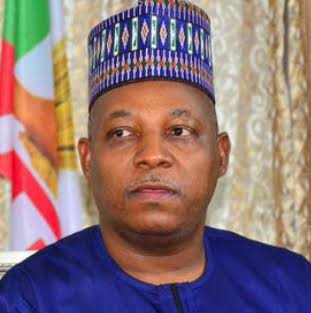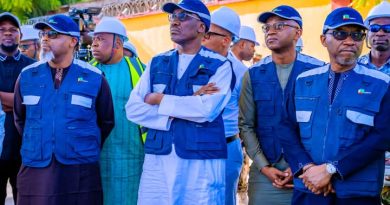The Man Who Saw Tomorrow: How Shettima’s Mega School Model For Children Of Hanagamba And Mbororo Fulanis Can Address Insecurity
By Hon Christopher Godwin Akaba
“We can send our own wards, our own children, to the poshest private schools, deluding ourselves that the children of the poor can rot away, and when the times comes, we can use them as political thugs for our electioneering process. Believe me, these children of the poor that we abandoned might end up being the Frankenstein monster that will consume us.” – Kashim Shettima
Yes. He may not be an astrologer like the 17th-century French mystic Nostradamus (The Man Who Saw Tomorrow), but you cannot take away the fact that Kashim Shettima quintessentially represents our 21st century Nostradamus, as he is equally good at predicting the future. Today, Shettima’s many prognostication have come to pass.
While the farmers-herders conflict was gaining momentum in some parts of the country with its attendant loss of lives and farmlands – a conflict that later culminated in some of the herders taking up arms and subsequently engaging in acts of kidnapping and terrorism, Shettima had envisioned the panacea in ending such conflict in the long term; the reason he built a 24 classrooms mega primary school for children of Hanagamba, Mbororo and Fulani Ethnic Groups in Borno State, being the first of its kind in the country. The idea for establishing such school was borne out of the genuine desire of Kashim Shettima to transit them into modern civilization by enrolling their children in formal education schools so that they do not grow up to become the proverbial “time bomb” and Frankenstein monster that will consume the nation.
I daresay, for the benefit of the narrow-minded, that if Shettima were to be Governor of Borno State when the first Boko Haram crisis broke out in 2009, we wouldn’t be where we are today. He would have effectively and efficiently curtailed and nipped the crisis in the bud through the application of his leadership-cum-peace and conflict resolution and crisis-management skills. But before he became Governor in 2011, the crisis was already badly managed and had spiral out of control. Even at that, by the time he left office in 2019, through his dogged leadership style, he ensured that most schools and public buildings destroyed by Boko Haram were rebuilt through the Ministry of RRR. For instance, those that visited Maiduguri capital city after normalcy was restored would later confess that Maiduguri looked like a place that has never experienced a war.
The story behind the conception of the mega school for the Hanagamba and Mbororo Fulani could move one to tears. Shettima was said to be moved by an encounter he had with the nomadic Fulanis while he was on inspection tour of one of the mega schools he built for the over 50,000 children orphaned by the Boko Haram insurgency around Baga Road, Maiduguri metropolis. At the construction site, he found that the “security guards” were all Fulani nomads that had probably lost their cattle to cattle rustlers and Boko Haram. They were living in the uncompleted buildings with their families, undertaking inconsequential trades to eke out a living, in tow with a number of children of school age who were not attending any school. He was worried that the children were not only out of school but were on course to inherit their parents’ livelihood, to end up as gate boys and girls.
In his resolve to cut this vicious cycle of poverty that is prevalent among the pastoralists, Shettima personally led the campaign to have the Mbororo and Hanagamba send their children to school. After weeks of persuasion, the parents finally allowed their children to be enrolled into school. The first set of kids, numbering eleven, were sent to Elkanemi College, Maiduguri, under full sponsorship of the state government. This generous deed of Shettima spread fast among the Mbororo community resident within Maiduguri and as he made more inspection tours of project sites, he met more of them and realized that they were a sizeable community that needed to be catered for. One of the Mega Schools was thereafter dedicated to their children, now known as the Aisha Buhari Integrated School for the Nomadic Community. As at the time he left office, a total number of 525 pupils were enrolled.
From the now famous quote of Malala Yousafzai “with guns you can kill terrorists, with education you can kill terrorism”, if governments in the past had invested in the education of children of the Hanagambas and Mbororos, rather than allowing them in the wilderness rearing their cattle and mingling with bad elements or domiciling in communities as ‘security guards’ in construction sites and uncompleted buildings, we wouldn’t have been bedevilled with the menace of banditry today.
The Shettima Mega School Model for the Hanagamba and Mbororo Fulani is an eye opener. The importance of this noble project to Nigeria’s national security cannot be overemphasized. The Tinubu Presidency should leverage on this Model as one to adopt in order to end the farmers-herders conflict in the long run, on one hand, and banditry, on the other hand. Shettima – a Kanuri, and Tinubu’s choice as running mate, is therefore a right step in the right direction towards the actualization of laudable initiatives such as this.
Likewise, I would call on all the Fulani elites, youths and women in the country to rally round the Tinubu-Shettima project. It is now payback time. Asiwaju supported their own to become President. More so, the relationship between the Fulanis and Kanuris is sacrosanct and should be a model for others in the country to emulate.




